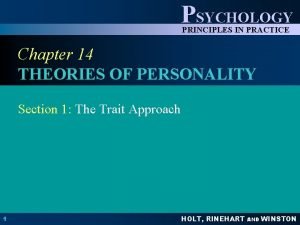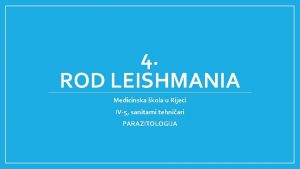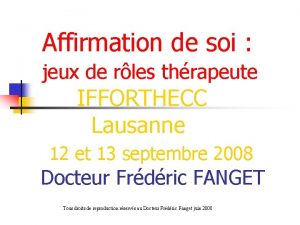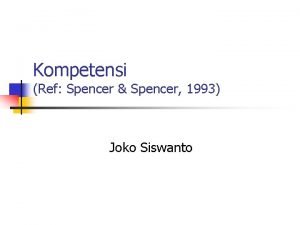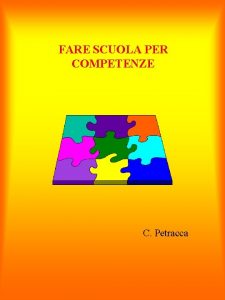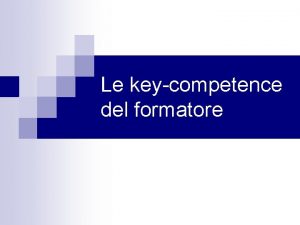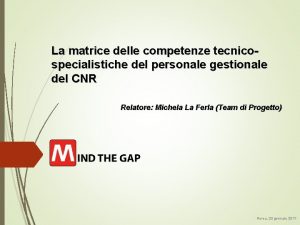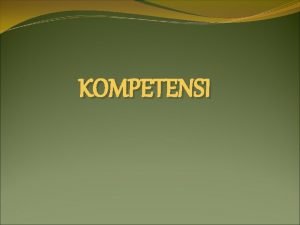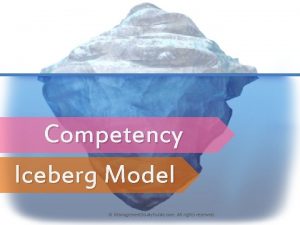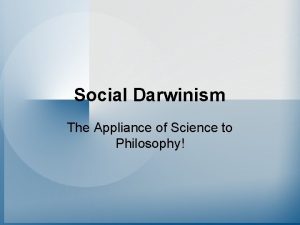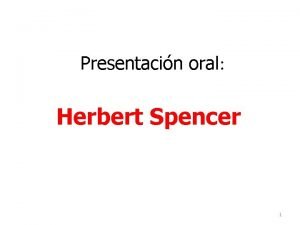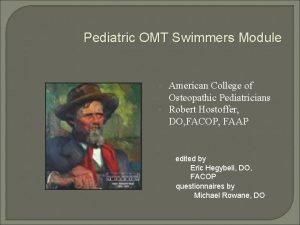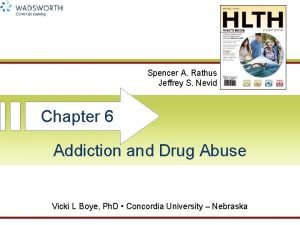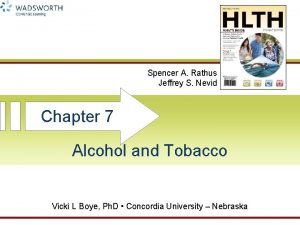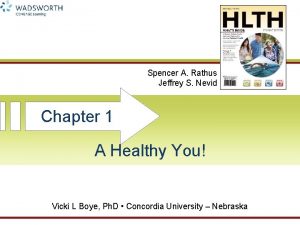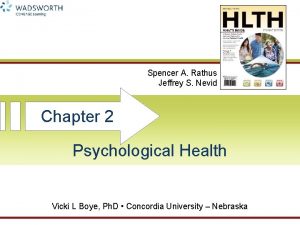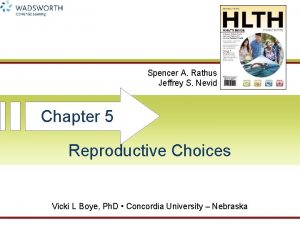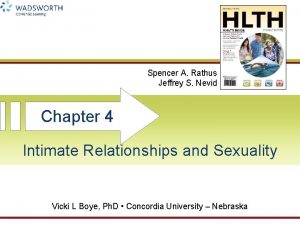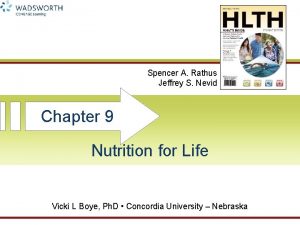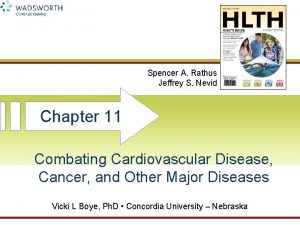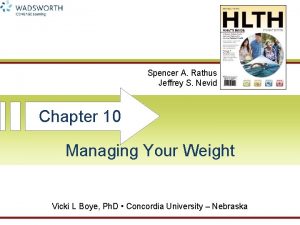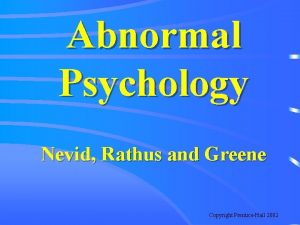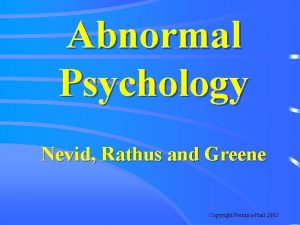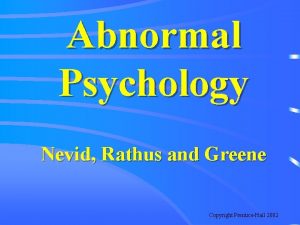Spencer A Rathus Jeffrey S Nevid Chapter 8













- Slides: 13

Spencer A. Rathus Jeffrey S. Nevid Chapter 8 Fitness for Life Vicki L Boye, Ph. D • Concordia University – Nebraska

Chapter 8 Fitness for Life Learning Outcomes § Describe the physical and psychological health benefits of exercise § Explain how to begin to get fit § Describe the uses of anaerobic exercise § Discuss the benefits of stretching § Describe exercise injuries – how to prevent them, how to treat them

Fitness and Exercise Fitness: The ability to perform moderate to vigorous levels of physical activity without undue fatigue. -The body’s ability to withstand stress and pressure Exercise: A structured sequence of movements performed consistently over a period of time sufficient to build the components of fitness. You can reap benefits with 30 minutes a day of moderate physical activity – five or more days a week.

Physical Benefits of Exercise • Reduced risk of cardiovascular disease • Through Aerobic Exercise – requires sustained increase in the use of oxygen • Reduces hypertension, boosts HDL, lowers blood levels of triglycerides • Weight management and improved body composition • Increases metabolism • Increases muscle-to-fat ratio and muscle burns calories even at rest

Physical Benefits of Exercise (cont) • Improved Immune System Functioning • Higher levels of NK cells • Reduced Cancer Risk • Colon-rectal and breast • Increased Energy • Prevention of Osteoarthritis and Osteoporosis • Muscle strengthening, stretching • Weight bearing exercise • Increased Sensitivity to Insulin • Helps regulate blood sugar levels

Getting Fit Key: Regular physical activity and exercise program Principles to Maximize Benefits of Training/Conditioning Ø Specificity Ø Overload Ø Progressive overload ØWarm-ups ØRegularity

Aerobic Exercise • Includes running, walking briskly, swimming laps, spinning, etc. • Uses large muscle groups in repetitive rhythmic movements • Aerobically fit people have: • Greater cardiac output • Lower resting heart rate • Afterburner effect • Recommendation: 3+ days a week, 20+mins, target heart rate between 60 -85% max heart rate

Anaerobic Exercise Ø Exercise involving short burst of intense muscle activity. Ø Tones and builds muscle Ø Muscle fitness ØMuscular strength – the amount of force (power) a muscle can exert during a single contraction ØMuscular endurance – ability to contract muscles repeatedly to complete tasks

Types of Resistance Training • Isometric: exert force against immovable object • Isotonic: variable force – constant resistance • Isokinetic: constant force – variable resistance

Stretching Flexibility training focuses on achieving and maintaining a full range of motion in the body’s joints. Static stretching (recommended) slowly stretching a muscle to an extended stretch and holding it for 10 -30 seconds Ballistic stretching (bouncing) can cause injuries and soreness

Exercise – Sudden Injuries Occur in single, abrupt incidents Ø Muscle Strains a stretch or actual tear in muscle fibers or surrounding tissue Ø Sprains an injury caused by a sudden joint twist that stretches or tears a ligament Ø Cardiovascular Problems Recognize symptoms: pain or pressure, sudden lightheadedness, cold sweat, extreme paleness or fainting

Exercise – Overuse Injuries Develop gradually as bone, muscle, or connective tissues are repeatedly stressed beyond their capacity to recover and adapt ØTendonitis inflammation of the tendon ØStress Fractures tiny breaks in bones caused by repeated and excessive pressure or pounding ØShin Splints similar to stress fracture except tears in muscle fibers rather than breaks in bones

Treatment of Injuries – R. I. C. E • For minor injuries… R. I. C. E. principle Rest Ice Compress Elevate
 Psychology principles in practice spencer a rathus pdf
Psychology principles in practice spencer a rathus pdf Nevid insekt
Nevid insekt échelle d'affirmation de soi de rathus
échelle d'affirmation de soi de rathus Spencer 1993
Spencer 1993 Iceberg competenze
Iceberg competenze Modello iceberg di spencer e spencer
Modello iceberg di spencer e spencer Matrice delle competenze
Matrice delle competenze Spencer and spencer 1993
Spencer and spencer 1993 Spencer competency dictionary
Spencer competency dictionary Percy spencer invented the microwave
Percy spencer invented the microwave Herbert spencer theory
Herbert spencer theory Herbert spencer theory
Herbert spencer theory Biografia de herbert spencer
Biografia de herbert spencer Infrspinatus
Infrspinatus
